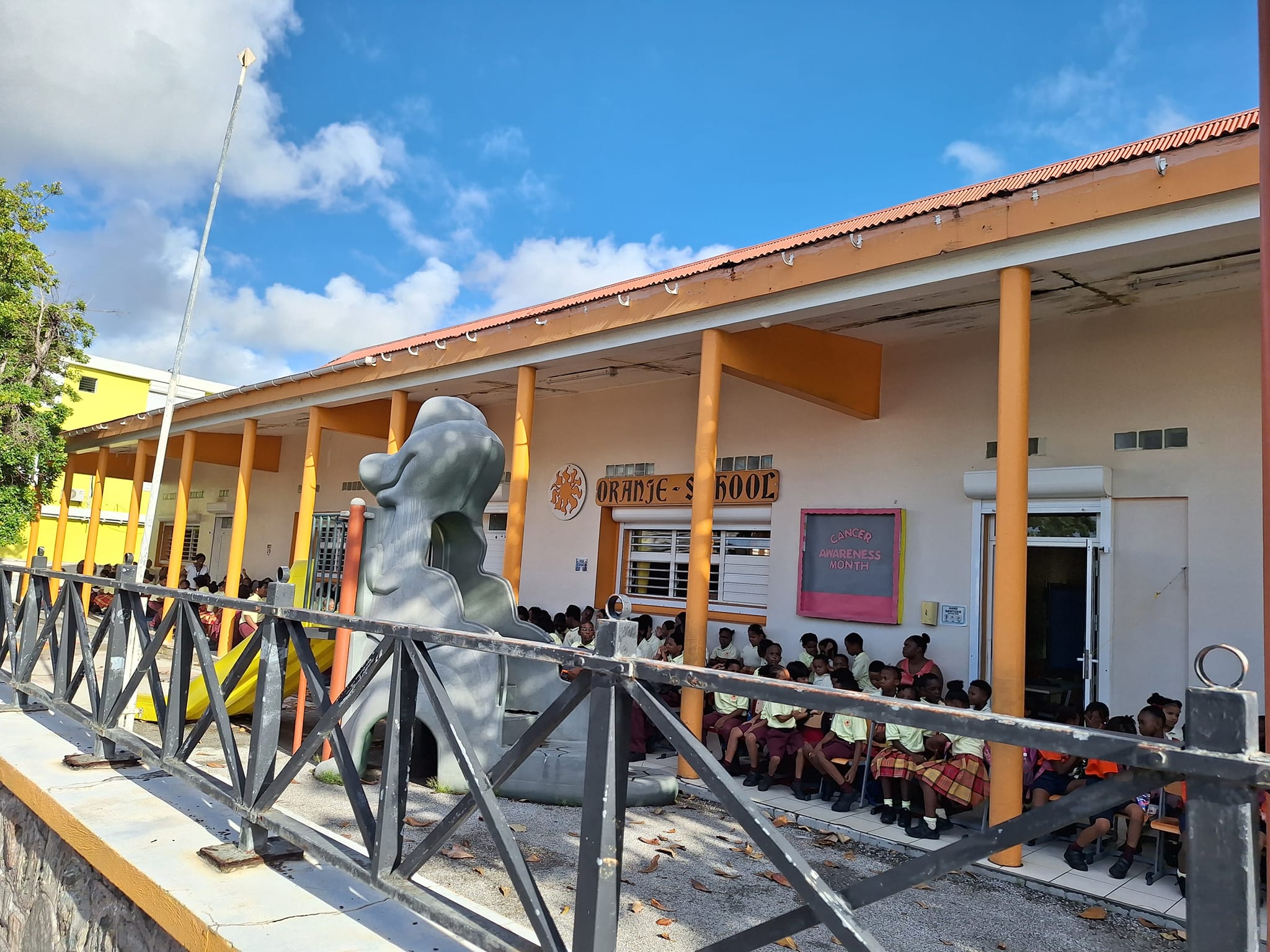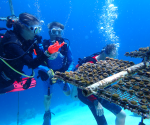Climate change: a serious problem nobody talks about

PHILIPSBURG — Climate change is going to be a serious problem for the Caribbean region and in particular for Saba, Statia and St. Maarten. Scientists of the Royal Dutch Meteorological Institute (KNMI) conclude based on the latest IPCC-report of the United Nations that the climate will become hotter and drier, especially during the dry season. The three islands will also be confronted with heavier hurricanes. (IPPC stands for Intergovernmental Panel on Climate Change).
The KNMI-scientists conclude that there is already little rainfall between December and April, but that it will become even less during the next couple of decades. It is also getting warmer: since the eighties of last century temperatures in Caribbean Netherlands have increased by 0.2 degrees Celsius per year.
The risk of hurricanes does not change for Bonaire, Aruba and Curacao. For St. Maarten, Saba and Statia it is a different story: more hurricanes with a higher intensity and much more rainfall.

Rising sea levels will also become an issue. Even if the world-emission of CO2 (carbon dioxide) diminishes, Bonaire can expect an increase of the sea water level between 31 and 78 centimeters. If the emissions go up, the levels can increase between 55 and 127 centimeter.
The worldwide emission of CO2 will have an effect on the islands, the KNMI-scientists say. Higher emissions mean higher temperatures and more often extreme weather. “This means that climate policy focused on diminishing emissions can make a big difference for the future climate of Bonaire, Saba and Statia.” It is unclear why this apparently does not apply to St. Maarten, given its vicinity to Saba and Statia.
The KNMI foresees a stronger increase of wind speeds in the dry season for Bonaire, Aruba and Curacao. The increase in wind speed is less for Statia and Saba (and therefore likely also for St. Maarten).
“It is a fact that people influence the climate,” the KNMI states in its report. “Never before during the past 2,000 years did the temperature on earth increase so fast.” The IPCC draws this conclusion in its sixth climate report that was published in August 2021.
In 2022, the global average temperature was 1.2 degrees Celsius higher than during the pre-industrial era (1850-1900).
In scenarios whereby temperatures continue to increase, the frequency and intensity of heat waves, extreme rainfall and drought increase worldwide. Some changes, like the warming-up of the oceans, the melting of ice caps and the increase of the seawater level will continue for many centuries.
In the podcast The Forgotten Climate Crisis journalist John Samson took a closer look at the effect of climate change for the Caribbean islands in the kingdom. He mentions several scenarios that all will have a dramatic effect on the lives of the islanders.
Food will become prohibitively expensive, Samson wrote. The United Nations expects serious food shortages thirty years from now. Why? Many food producing countries will be confronted with extreme drought or heavy rainfall. Harvests will fail on a global scale, and food prices will keep increasing.
Climate change will also be the agent that is going to cause poverty and inequality. The average temperature in Caribbean Netherlands has increased significantly during the past forty years, according to research by the Dutch Caribbean Nature Alliance. The heat will increase the risk of death for vulnerable elderly and sick citizens. Affluent people have a better chance of dealing with the effect of climate change; they will be able to afford repairs to their homes after a hurricane and they can flee to safety during extreme weather. Many people will be unable to pay for air conditioning and focusing on study in a classroom without airco will become a mission impossible.

Photo Caption: Oranje School sit-out due lack of airco in class rooms – Oct. 30, 2023 – Photo by Ralph Cantave
Another issue is brackish water. Bonaire has already experienced the presence of brackish water on asphalt. The salt in the water damages the undercarriage of cars and their owners will have to pay more frequent visits to a garage.
Extreme rainfall will erode the fertile layer of land little by little. This is already happening on Statia, where 12,000 goats are eating all the vegetation. When there are few plants left to keep the earth together, extreme rainfall will flush the fertile layer away.
Local politicians seemingly do not worry about climate change. The parliament of Curacao has never debated the issue and all the government intends to do is more research and focus on education. Aruba wants to get 40 percent of its energy needs from sustainable resources by 2030 but currently the island is increasing the use of liquid gas for the production of electricity and water.
St. Maarten is since 2017 still busy with reconstruction after Hurricane Irma. Not a beep about climate change.
In The Hague the situation is not much better. The government talks a lot about ideas and solutions and Minister Jetten (Energy and Climate) promised a plan for Bonaire, Statia and Saba before the summer recess. But it is not there yet.
The government has to come up with an answer to the question how Bonaire, Saba and Statia can switch completely to sustainable energy. It will also have to announce how the countries – Aruba, Curacao and St. Maarten – can get help.


























